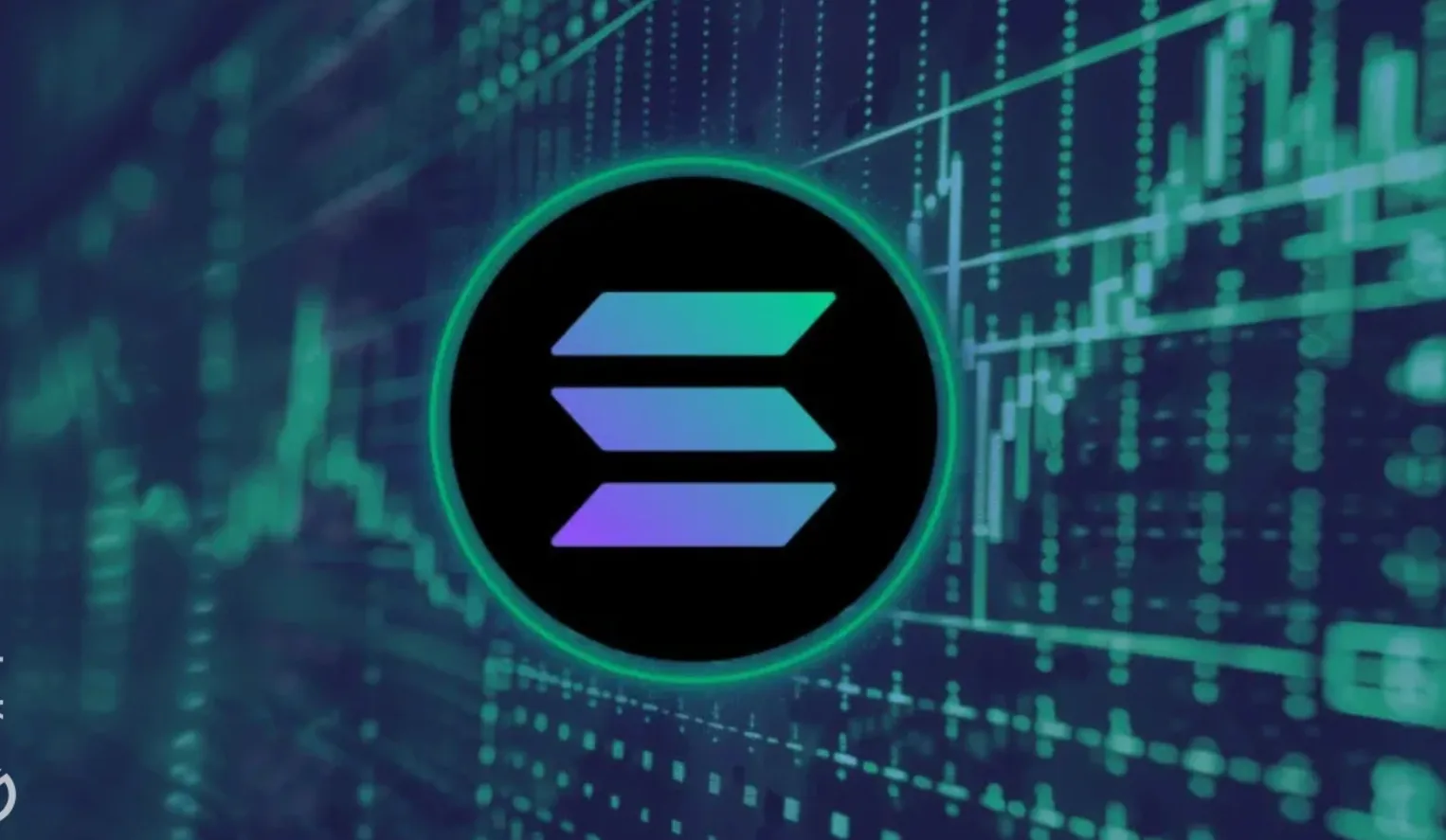Forward Industries (NASDAQ: FWDI), the largest institutional holder of Solana (SOL) tokens, is confronting a staggering $668 million in unrealized losses as the cryptocurrency trades precipitously below the company’s purchase price of $230 per token. This massive paper loss represents one of the most dramatic examples of institutional cryptocurrency exposure gone wrong and raises fundamental questions about corporate treasury strategies that concentrate heavily in volatile digital assets.
With 6.91 million SOL tokens in its treasury—representing 1.124 percent of Solana’s total supply—Forward Industries has seen the value of its holdings plummet to $917.42 million from the $1.59 billion originally invested. As nearly 80 percent of Solana’s circulating supply is now held at a loss, with the token trading at approximately $126.9, mounting pressure has emerged on institutional cryptocurrency strategies like Forward’s that bet heavily on a single blockchain platform’s continued appreciation.
Build the future you deserve. Get started with our top-tier Online courses: ACCA, HESI A2, ATI TEAS 7, HESI EXIT, NCLEX-RN, NCLEX-PN, and Financial Literacy. Let Serrari Ed guide your path to success. Enroll today.
The Scale of Forward’s Solana Position and Accumulated Losses
Forward Industries, a company that transformed itself from a traditional manufacturing business into a cryptocurrency treasury play, holds an extraordinary 6,910,568 SOL tokens according to its latest public disclosures. These holdings were acquired for a total of $1.59 billion at an average cost basis of $230 per token, representing one of the largest institutional commitments to Solana by any publicly traded company globally.
As of November 24, 2025, with Solana trading at approximately $126.9, the current market value of Forward’s SOL holdings stands at just $917.42 million. This represents an unrealized loss of $668.73 million, or approximately 42 percent below the purchase price. To put this in perspective, the company has lost nearly two-thirds of a billion dollars in value on paper in just a matter of months since accumulating its position.
The magnitude of this loss is particularly striking when compared to the company’s overall market capitalization and financial resources. For a company that was previously valued at relatively modest levels before its cryptocurrency pivot, absorbing such a substantial unrealized loss creates significant financial and strategic challenges that extend far beyond simple mark-to-market accounting adjustments.
The Accumulation Strategy: Timing and Execution
Forward Industries began its aggressive accumulation of Solana tokens in September 2025, a period when SOL was trading near what many market participants believed were attractive levels following earlier market volatility. The company initially purchased 6.82 million tokens at an average price of approximately $232 each, committing well over $1.5 billion to establish its position.
According to the company’s disclosure dated November 15, 2025, Forward has since marginally increased its position to the current 6.91 million SOL through additional purchases and staking rewards. The October 2025 addition of 38,968 SOL to its holdings demonstrates that management was continuing to add to the position even as prices were beginning to decline from the levels at which the initial accumulation occurred.
This accumulation strategy represents a concentrated bet on Solana’s long-term value proposition and ecosystem growth. Unlike diversified cryptocurrency treasury strategies employed by some institutional holders who spread exposure across multiple blockchain platforms and digital assets, Forward Industries made a decisive commitment to Solana as its primary digital asset holding.
The timing of Forward’s entry proved unfortunate, as the company accumulated its position just before a significant market downturn that would see Solana lose more than half its value from recent highs. This timing risk is inherent in any investment strategy but is particularly pronounced in cryptocurrency markets known for extreme volatility and rapid sentiment shifts.
Stock Price Collapse: Market Cap Below Asset Value
The impact of Forward Industries’ Solana losses extends beyond unrealized cryptocurrency losses to devastating effects on the company’s stock price and shareholder value. The share price of Forward Industries on NASDAQ has collapsed from $40 to just $8.17, representing a decline of approximately 80 percent that has wiped out the vast majority of shareholder equity value.
The company’s current market capitalization stands at $706.38 million, which is remarkably less than the current $917.42 million market value of its Solana holdings. This significant discount—where the company’s stock trades at approximately 77 percent of its cryptocurrency asset value—reflects multiple concerns among equity investors.
First, the discount suggests that equity markets expect further declines in Solana’s price, anticipating that by the time Forward might liquidate or utilize its SOL holdings, their value will be even lower than current market prices. Second, the discount may reflect concerns about the company’s ability to effectively monetize or utilize such a large SOL position without impacting market prices through sales. Third, investors may be pricing in governance concerns, management risk, or opportunity costs associated with such concentrated cryptocurrency exposure.
Fourth, the discount could reflect tax considerations, as any eventual sale of the SOL holdings would likely trigger capital loss recognition that might have limited utility given the company’s tax situation. Finally, the substantial discount indicates a fundamental crisis of confidence in the investment thesis that drove Forward’s cryptocurrency pivot in the first place.
For shareholders who invested in Forward Industries at higher stock prices, the decline represents a catastrophic loss of wealth. Those who purchased shares when the stock was trading at $40 have seen their investment lose more than 80 percent of its value, with no clear path to recovery visible given current Solana market conditions.
Solana Market Dynamics: Widespread Losses Across the Ecosystem
Forward Industries’ predicament must be understood within the broader context of Solana market dynamics that have left the vast majority of token holders nursing significant losses. According to data from Glassnode, a blockchain analytics firm that tracks on-chain metrics across major cryptocurrencies, approximately 79.6 percent of Solana’s circulating supply is currently held at a loss—meaning tokens were acquired at prices higher than current market levels.
In absolute terms, roughly 478.5 million SOL tokens are held underwater by their current owners, representing a massive cohort of investors facing unrealized losses. This widespread distribution of losses across the Solana holder base creates several market dynamics that complicate Forward Industries’ position.
First, the large percentage of underwater holders creates potential selling pressure if prices rally toward breakeven levels, as investors who have been holding losing positions may be eager to exit when they can minimize losses. Second, the prevalence of losses indicates diminished conviction among the holder base, potentially reducing the likelihood of sustained buying pressure that could drive prices higher. Third, underwater holders represent a source of potential capitulation selling if prices decline further or if negative news emerges, creating downside risk.
Solana reached an all-time high of $263.2 in November 2024, a level that now seems distant given current prices around $126.9. The token has lost more than 50 percent of its value from that peak, a decline that reflects both Solana-specific factors and broader cryptocurrency market weakness that has affected virtually all digital assets to varying degrees.
The November 2024 peak occurred during a period of intense enthusiasm for Solana’s ecosystem growth, driven by factors including the platform’s high transaction throughput, growing decentralized finance (DeFi) activity, expanding NFT marketplaces, and increasing developer activity. Many investors who bought during this euphoric phase now face substantial losses, having purchased at prices that may not be revisited for months or potentially years depending on market conditions.
One decision can change your entire career. Take that step with our Online courses in ACCA, HESI A2, ATI TEAS 7, HESI EXIT, NCLEX-RN, NCLEX-PN, and Financial Literacy. Join Serrari Ed and start building your brighter future today.
Network Fundamentals vs. Token Price: A Disconnect
Interestingly, Solana’s fundamental network metrics have remained robust even as token prices have declined significantly. This disconnect between network usage and token valuation highlights the complex relationship between blockchain utility and cryptocurrency prices, demonstrating that strong fundamentals do not automatically translate into price appreciation, especially during broader market downturns.
In late 2024, despite price pressures, Solana posted impressive usage numbers that surpassed many competing blockchain platforms. Most notably, the network surpassed Ethereum in monthly fee generation, producing over $200 million in fees during peak months. This metric is significant because fees represent actual economic activity occurring on the blockchain, indicating real users conducting transactions, deploying smart contracts, and utilizing decentralized applications.
Additionally, Solana’s total value locked (TVL)—a measure of assets deposited in DeFi protocols built on the platform—rose to $11.4 billion at its peak, making Solana the second-largest blockchain by TVL after Ethereum. This substantial TVL indicates that billions of dollars worth of cryptocurrency assets were being actively utilized in Solana’s DeFi ecosystem for lending, borrowing, trading, and yield generation.
The strong network fundamentals create an interesting analytical challenge for assessing Forward Industries’ investment thesis. On one hand, the robust usage metrics suggest that Solana is successfully building a valuable blockchain ecosystem that could support long-term value appreciation. On the other hand, the severe price decline despite strong fundamentals indicates that factors beyond network usage—including overall cryptocurrency market sentiment, macroeconomic conditions, competition from other blockchains, and technical selling pressure—can overwhelm positive fundamentals.
For Forward Industries, this disconnect is particularly frustrating. The company bet on Solana’s technology and ecosystem growth, and by many measures, that bet has proven correct as the network has gained users and activity. However, token holders have not been rewarded for this growth, as prices have declined precipitously despite improving fundamentals.
On-Chain Activity: Staking Strategy Rather Than Liquidation
Market observers closely monitoring blockchain transaction data noted significant on-chain activity involving Forward Industries’ Solana holdings that initially raised speculation about potential liquidation. A large transfer of 1.727 million SOL tokens—worth approximately $219.32 million at the time of the transaction—was moved by Forward Industries to a custody wallet address, triggering immediate concern among market watchers that the company might be preparing to sell a substantial portion of its holdings.
Such a sale would have been significant for multiple reasons. First, liquidating 1.727 million SOL would represent approximately 25 percent of Forward’s total holdings, a major reduction in the company’s cryptocurrency exposure. Second, attempting to sell such a large quantity of tokens would likely impact market prices, potentially triggering a further decline that would harm the value of the company’s remaining holdings. Third, selling at current prices would crystallize massive realized losses that would flow through the company’s financial statements.
However, subsequent blockchain analysis revealed that the tokens were later returned to Forward Industries’ staking address, indicating that the transfer was part of internal portfolio management and restructuring rather than preparation for liquidation. The movement appears to have been related to the company’s staking operations, where SOL tokens are locked in staking contracts to help secure the Solana network and generate staking rewards.
Blockchain data examined by on-chain analysts showed no evidence of selling activity, with the tokens remaining under Forward Industries’ control throughout the transfer process. This suggests that despite the massive unrealized losses, company management remains committed to holding its Solana position rather than crystalizing losses through sales.
The company continues to generate yield through staking its SOL holdings, earning rewards that provide modest income but fall far short of offsetting the capital losses on the underlying tokens. Staking yields on Solana typically range from 5-8 percent annually, meaning Forward Industries might earn $45-70 million in annual staking rewards at current prices—a meaningful amount but insufficient to offset the hundreds of millions in unrealized losses.
Comparative Analysis: How Other Digital Asset Treasuries Are Faring
Forward Industries’ situation can be better understood when examined in the context of other publicly traded companies that have adopted digital asset treasury strategies. The performance of these various corporate cryptocurrency holdings varies dramatically depending on which assets were acquired, at what prices, and at what scale.
The most successful example is Strategy (formerly MicroStrategy), the business intelligence company that transformed itself into a Bitcoin acquisition vehicle under the leadership of executive chairman Michael Saylor. Strategy holds 649,870 BTC acquired at an average cost of $74,433 per bitcoin. With Bitcoin currently trading well above $90,000, Strategy is sitting on an unrealized profit of approximately $6.15 billion, representing one of the most successful corporate treasury strategies in financial history.
Strategy’s Bitcoin holdings have appreciated substantially since acquisition, vindicating the company’s aggressive accumulation strategy and making the firm’s stock one of the best-performing equities during the period. The success has spawned numerous imitators seeking to replicate the model with various cryptocurrencies.
At the opposite extreme is Bitmine, a company that made a concentrated bet on Ethereum at extremely unfortunate timing. Bitmine accumulated 3.56 million ETH at an average purchase price of approximately $4,010 per token, committing roughly $14 billion to establish its position. With Ethereum prices having fallen substantially from those levels, Bitmine faces an unrealized loss of $4.52 billion, making it one of the largest corporate cryptocurrency losses on record.
Forward Industries’ $668 million loss falls between these extremes but is nonetheless substantial relative to the company’s size and resources. The divergent fortunes of Strategy, Forward Industries, and Bitmine illustrate the extreme range of outcomes possible when companies concentrate their balance sheets in volatile cryptocurrency assets. While the potential upside can be enormous as Strategy has demonstrated, the potential downside is equally dramatic as Forward and Bitmine have learned.
According to research from Galaxy Digital, digital asset treasuries collectively manage over $100 billion in cryptocurrency holdings across numerous publicly traded companies, private firms, and investment vehicles. Bitcoin-focused firms hold approximately $93 billion in BTC, while Ethereum-focused firms control over $4 billion in ETH. Solana-focused treasuries like Forward Industries represent a smaller but growing segment of this market.
Market Outlook and Technical Indicators
Current market data indicates that Solana futures open interest has stabilized at approximately 8 million contracts after declining from higher levels during the recent volatility. Futures open interest—the total number of outstanding derivative contracts—serves as a measure of market participation and leverage in cryptocurrency markets.
The stabilization of open interest suggests that the most severe deleveraging has likely already occurred, with highly leveraged traders having been forced out of positions during the decline. This could indicate that the market is finding a temporary equilibrium around current price levels, though it does not necessarily signal an imminent recovery.
The market shows signs of consolidation, with reduced volatility and more cautious trading activity compared to the wild swings observed during the peak and subsequent crash. Trading volumes have normalized, and price movements have become less extreme, suggesting that the panic phase may have passed even if recovery remains uncertain.
Technical analysts examining Solana’s price charts note that the token is currently trading in a range, having found support around the $120-130 level after failing to hold higher support zones. The key question for traders and holders like Forward Industries is whether this support will hold or whether another leg down could emerge if broader market conditions deteriorate.
Management Silence and Strategic Commitment
Despite the massive unrealized losses and collapsed stock price, Forward Industries has maintained its strategic commitment to Solana, with no public indications of a change in direction. Chairman Kyle Samani, who has been closely associated with the Solana ecosystem and was instrumental in Forward’s pivot to cryptocurrency, has made no public statements announcing any strategic shift or plan to liquidate holdings.
This silence could reflect several possibilities. Management may genuinely believe that Solana will recover over time and that selling at current prices would lock in permanent losses rather than temporary paper losses. They may lack better alternatives, recognizing that liquidating such a large position would be difficult without severely impacting prices. They may face internal corporate governance constraints or shareholder pressure that makes strategic changes complicated. Or they may simply be waiting for better market conditions before reassessing the strategy.
For Forward Industries, the path forward appears challenging regardless of near-term price movements. If Solana recovers substantially, the company could see its losses narrow or even eventually turn to gains, vindicating the patience shown during the downturn. However, if Solana remains depressed or declines further, the company faces continued erosion of shareholder value with limited obvious remedies.
The company appears focused on long-term positioning, continuing to stake its holdings and collect rewards while hoping that Solana’s strong network fundamentals will eventually be reflected in token price appreciation. Whether this patience will be rewarded or whether it represents a stubborn refusal to acknowledge a failed strategy remains to be seen as the cryptocurrency market continues to evolve.
Broader Implications for Corporate Cryptocurrency Strategies
Forward Industries’ predicament serves as a cautionary tale for other companies considering large-scale cryptocurrency treasury strategies. While Strategy’s Bitcoin success has inspired many imitators, Forward’s Solana losses and Bitmine’s Ethereum disaster demonstrate that concentrated cryptocurrency exposure carries enormous risks that can devastate shareholder value.
Several lessons emerge from Forward’s experience. First, cryptocurrency timing is extremely difficult, and even companies making calculated entries can find themselves buying near peaks rather than troughs. Second, concentration risk in a single cryptocurrency can lead to catastrophic outcomes if that particular token underperforms. Third, corporate treasuries may lack the flexibility that individual investors have to cut losses quickly, as large positions can be difficult to liquidate without market impact. Fourth, stock market discounts to net asset value can emerge when investors lose confidence in management’s cryptocurrency strategy, creating a doom loop where falling stock prices undermine corporate credibility.
As more companies consider cryptocurrency treasury strategies, Forward Industries’ experience provides important data points about what can go wrong when digital asset bets do not work out as planned. The coming months will reveal whether management’s conviction and patience will be rewarded or whether the company will be forced to recognize permanent capital impairment on what was supposed to be a transformative strategic move.
Ready to take your career to the next level? Join our Online courses: ACCA, HESI A2, ATI TEAS 7 , HESI EXIT , NCLEX – RN and NCLEX – PN, Financial Literacy!🌟 Dive into a world of opportunities and empower yourself for success. Explore more at Serrari Ed and start your exciting journey today! ✨
Track GDP, Inflation and Central Bank rates for top African markets with Serrari’s comparator tool.
See today’s Treasury bonds and Money market funds movement across financial service providers in Kenya, using Serrari’s comparator tools.
Photo source: Google
By: Montel Kamau
Serrari Financial Analyst
25th November, 2025
Article, Financial and News Disclaimer
The Value of a Financial Advisor
While this article offers valuable insights, it is essential to recognize that personal finance can be highly complex and unique to each individual. A financial advisor provides professional expertise and personalized guidance to help you make well-informed decisions tailored to your specific circumstances and goals.
Beyond offering knowledge, a financial advisor serves as a trusted partner to help you stay disciplined, avoid common pitfalls, and remain focused on your long-term objectives. Their perspective and experience can complement your own efforts, enhancing your financial well-being and ensuring a more confident approach to managing your finances.
Disclaimer: This article is for informational purposes only and does not constitute financial advice. Readers are encouraged to consult a licensed financial advisor to obtain guidance specific to their financial situation.
Article and News Disclaimer
The information provided on www.serrarigroup.com is for general informational purposes only. While we strive to keep the information up to date and accurate, we make no representations or warranties of any kind, express or implied, about the completeness, accuracy, reliability, suitability, or availability with respect to the website or the information, products, services, or related graphics contained on the website for any purpose. Any reliance you place on such information is therefore strictly at your own risk.
www.serrarigroup.com is not responsible for any errors or omissions, or for the results obtained from the use of this information. All information on the website is provided on an as-is basis, with no guarantee of completeness, accuracy, timeliness, or of the results obtained from the use of this information, and without warranty of any kind, express or implied, including but not limited to warranties of performance, merchantability, and fitness for a particular purpose.
In no event will www.serrarigroup.com be liable to you or anyone else for any decision made or action taken in reliance on the information provided on the website or for any consequential, special, or similar damages, even if advised of the possibility of such damages.
The articles, news, and information presented on www.serrarigroup.com reflect the opinions of the respective authors and contributors and do not necessarily represent the views of the website or its management. Any views or opinions expressed are solely those of the individual authors and do not represent the website's views or opinions as a whole.
The content on www.serrarigroup.com may include links to external websites, which are provided for convenience and informational purposes only. We have no control over the nature, content, and availability of those sites. The inclusion of any links does not necessarily imply a recommendation or endorsement of the views expressed within them.
Every effort is made to keep the website up and running smoothly. However, www.serrarigroup.com takes no responsibility for, and will not be liable for, the website being temporarily unavailable due to technical issues beyond our control.
Please note that laws, regulations, and information can change rapidly, and we advise you to conduct further research and seek professional advice when necessary.
By using www.serrarigroup.com, you agree to this disclaimer and its terms. If you do not agree with this disclaimer, please do not use the website.
www.serrarigroup.com, reserves the right to update, modify, or remove any part of this disclaimer without prior notice. It is your responsibility to review this disclaimer periodically for changes.
Serrari Group 2025












